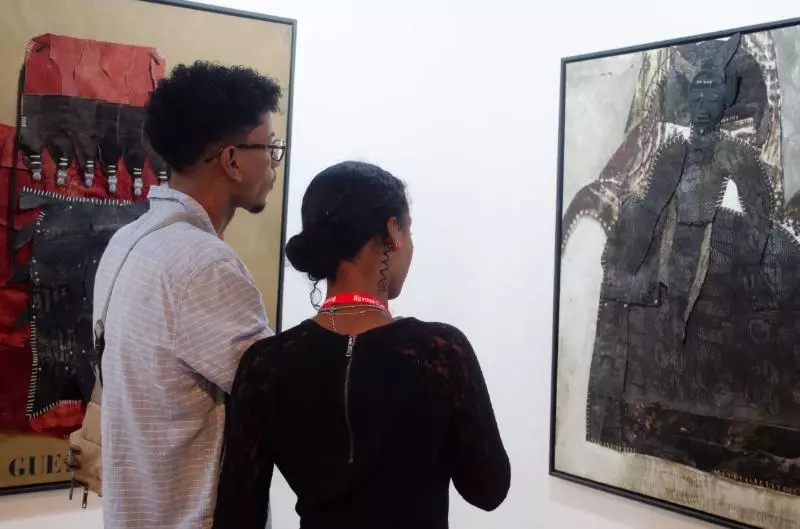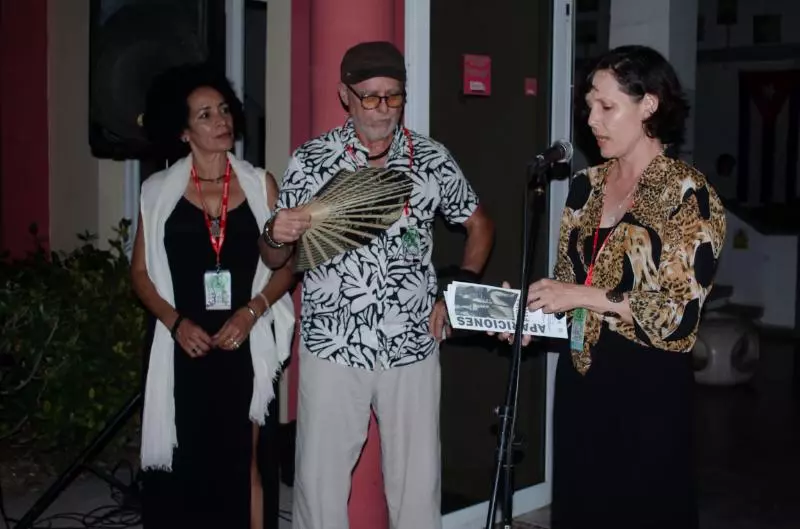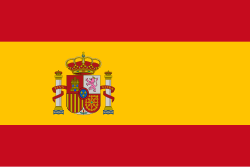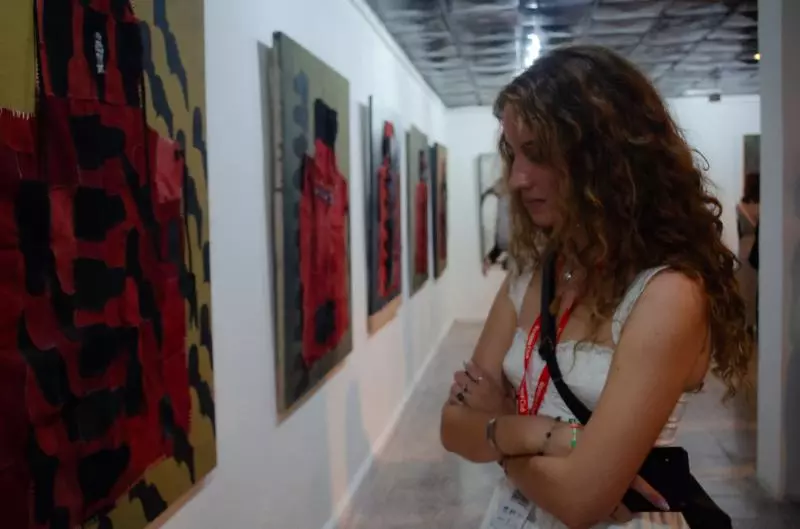It wasn’t the first, but it was the second, the incomprehensible treatise between the arts. I entered the “Limits” of life in a second, first setting foot, then adjusting the headphones that desecrated the space.
It seems unfair to the sensation of the gaze, but Ariel is never unfair. As if my mouth was being sewn shut, I silently tugged on desire and let myself be carried away into the dance of chiaroscuros and intense reds and sepias and photographs printed in the air. Against the din, somewhat slowly, I danced between one, two, three, and another painting; enormous, imperiously three-dimensional on the edge of two-dimensionality.
Little men protruding from the canvas, bicycle inner tubes sewn onto the work, perpetual African forms circling the space, the metamorphosis of lines, indiscreet, perceptive strokes—is it perhaps the immaculate African conception that protrudes from the frame and extends over the entire island?
Moisés Finalé, a Cuban visual artist with over forty years of experience between Havana and Paris, is yet another member of this 1980s generation that has brought so much fruit to art, a partagas in the form of a man, a beast carrying nostalgia, once, a place, an unmissable exhibition within so much plastic and performative—installation—imagery that coexists in Babel, an unfathomable polymer.
His paintings seem to confront each other, furious characters, women with masks alluding to secondary protagonists, but the truth is that within the rawness with which her work can be viewed, there is a celebration of enjoyment, the union of feminine avatars through bodily expressions, the wisdom of sex, the figuration of the most beautiful—undefined—attributes of the face or body of that woman who is presented to us as a deity but whom each of us can be within pictorial liberation and beyond it as well.
Nymphs amalgamated with space, the jungle, noise, scenes of Western life extrapolated to the history of our American peoples, where mockingbirds and birch trees wait patiently for more women with covered faces and braided necks to desecrate the space.
Just like the “Apparitions,” it was one and two, plus more oars glued 5 cm from the frame.
It was a boat, a migratory rowboat without being one, but the sea draws you in, and you don’t want to leave it because, as someone who lives in the suburbs, you also long to emigrate and see the Montezumas and Las Meninas, and set foot in the Pompidou.
This exhibition, then, is a journey through everything that happens as time passes, an apparent lapse between 2023 and 2025—the dates in which the works were conceived—but also a dialogue between the past and the present, between the novelty of working with the canvas and the techniques employed, with a mixture of flavors imbued with a trans-avant-garde process.
I could then enter more than two, three, or four times, with Ariel in the background, without him, barefoot, agitated, or completely calm, sitting down to write in the drowsiness of the environment, in almost total darkness, with those giants looking back at me, but I wouldn’t feel pressured because entering this room and admiring each piece feels like being at home—lying in bed—thinking about the future of the world that rushes at us every night.
By: Yeema Martínez Yee
Translated by Aliani Rojas Fernández
- Russia Calls for Preserving Peace in Latin America - 20 de November de 2025
- Ministry of Public Health Strengthens Actions Against the Chikungunya - 20 de November de 2025
- China Awards Cuba as Partner Destination for the Cultural Heritage - 20 de November de 2025

